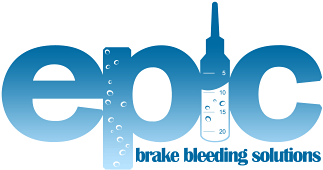
How to Bleed SRAM Hydraulic Road Disc Brakes
Posted by Alex MansellFurther to our complete guide to bleeding your Avid MTB disc brakes we created a while back, I thought I'd share the excellent tutorial video from SRAMtech outlining the complete procedure for bleeding SRAM hydraulic road disc brakes.
Hydraulic disc brakes for road bikes seem to be gaining popularity, as of writing this SRAM have two models on the market - the SRAM RED hydraulic road disc brake and the SRAM S-700 brake set. Watch the video below to find out what you need to know when it comes to bleeding them.
Things you'll need
- Avid Bleed Kit & DOT 5.1 Fluid
- 2.5mm Hex wrench
- Bleed Block (Find out how to make your own here)
- Flat blade screwdriver
- Torx T10 key (supplied with bleed kit)
- Elastic band (supplied with bleed kit)
- Paper towels or lint-free rag
- Torque wrench with 2.5mm Hex socket (optional)
- Work stand (optional)
- Safety glasses (Recommended)
SRAM Road Hydraulic Disc Brake Bleed
Video Transcript
Welcome to SRAM Technical Communication.
This video will show you how to properly bleed your SRAM Hydraulic Road disc brakes.
Tools and Supplies
You will need the following tools and supplies:
Safety glasses, nitrile gloves, Avid bleed kit or Avid professional bleed kit, bleed block, T10 Torx wrench, 2.5mm hex wrench, torque wrench with 2.5mm hex bit socket, T10 Torx bit socket, clean lint-free rags, Isopropyl alcohol.
Preparing the Syringes
Fill a syringe one half full of high performance DOT fluid, and the other syringe one quarter full.
Tap the side of the syringe to bring any air bubbles to the top. Place a towel around the tip and slowly push the air bubbles out of the syringe.
Close the hose clamp and pull on the plunger. Bubbles will appear to form and enlarge, continue to pull on the plunger and tap the syringe to release the bubbles from the sides and the bottom.
Release the plunger, open the clamp and carefully push the air out. Repeat this process 2-3 times for each syringe.
Parts Preparation
Remove the wheel from the bike. Remove the brake pads from the calliper and insert the appropriate bleed block. This will help prevent system overfill and keep DOT fluid from contaminating your brake pads.
Remove the calliper bleed port screw from the banjo bolt. Thread the half-full syringe into the calliper bleed port. Pull the lever hood back to expose the bleed port. Remove the lever bleed port screw. Thread the other syringe into the lever bleed port. Wipe off any brake fluid that may drip from the bleed port.
Bleed Procedure
Push on the calliper syringe plunger to move fluid into the lever syringe until it is half full. You should also see air bubbles fill the lever syringe. Close the clamp on the lever syringe.
If the fluid in the lever syringe is severley discoloured replace the fluid in the lever syringe before continuing.
Hold the brake lever to the handlebar and fasten it with a toe strap or rubber bands. Pull out on the calliper syringe plunger then gently push in on the plunger to pressurise the system. Repeat this procedure several times until the large bubbles stop coming out of the calliper.
Be careful not to pull too hard on the plunger or you will pull air past the plunger seal.
Remove the toe strap or rubber bands from the brake lever but keep the lever pulled in with your hand. Apply pressure to the calliper syringe plunger and slowly let the brake lever extend.
Close the clamp on the calliper syringe then remove the syringe from the calliper and reinstall the bleed port screw.
Wipe off any brake fluid from the calliper.
Open the clamp on the lever syringe. Pull out on the lever syringe plunger. Then gently push in on the plunger to pressurise the system.
Use gentle pressure. Applying too much pressure to the plunger can damage the system!
Squeeze and release the brake lever 10 times allowing the lever to snap back to its starting position. Repeat this procedure several times until large bubbles stop coming out of the lever.
Apply a small amount of pressure to the syringe plunger.
Failure to pressurise the system at this step will allow air to enter the system.
Remove the syringe. Reinstall the bleed screw into the pool of fluid in the bleed port.
Use isopropyl alcohol and a lint-free rag to remove any brake fluid from the lever and calliper. Make sure to clean around the lever bleed port screw.
Remove the bleed block from the calliper and reinstall the brake pads. Reinstall the wheel.
Pull on the lever very firmly several times. Inspect the lever and calliper for any leaks.
Dispose of DOT fluid in accordance to local and federal regulations.
This concludes the bleed procedure for the SRAM Hydraulic Road disc brakes. Thanks for watching.





